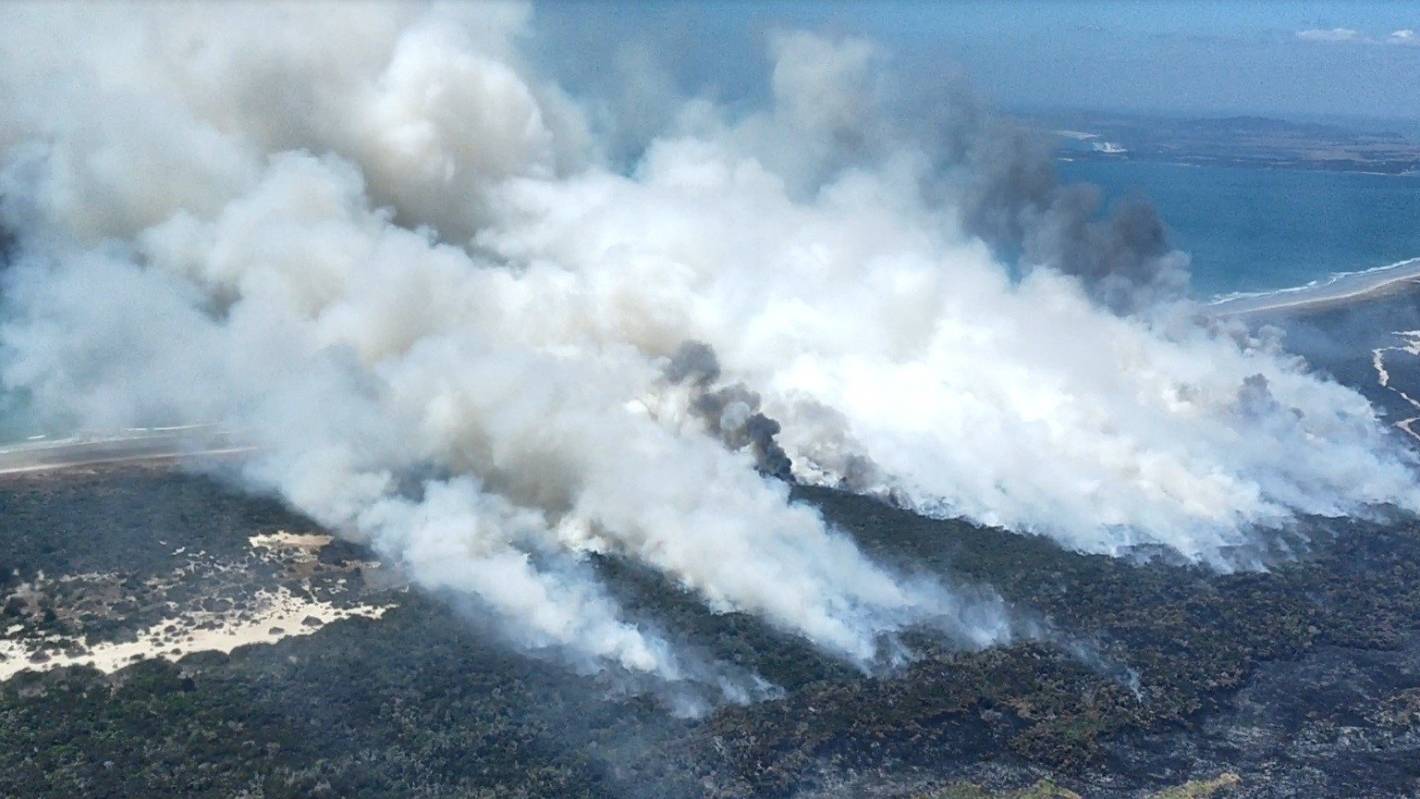- The Waiharara fire has not been declared extinguished, 10 months from when it started.
- It has cost more than $9 million to fight the blaze, Fire and Emergency said.
- The Department of Conservation is working to help restore Kaimaumau wetlands, the main area affected.
A wildfire at the top of the country continues to burn through peat, 10 months after it started.
The fire at Waiharara, north of Kaitāia, began on December 18, 2021, and twice forced the evacuation of Kaimaumau, although no buildings were lost.
At its peak, the fire engulfed 2800 hectares and a significant amount of the Kaimaumau wetlands scientific reserve was burnt.
The wetlands, co-managed by the Department of Conservation and Ngai Tokoto iwi, include endangered flora and fauna, as well as wāhi tapu sites.
READ MORE:
* Far North fires: Exhausted firefighters stress need for evacuation plans
* Far North fire: Large area of blaze contained as response team downscales
* No holiday for more than 50 firefighters battling Far North blaze
Firefighters called the blaze one of the most challenging and complex fires in New Zealand in decades.
An investigation into its cause, and an operational review, are still under way, a Fire and Emergency spokesperson said.
Fire and Emergency/Supplied
At its peak, the Waiharara fire covered 2800ha. Photo from January 17.
“The fire has not been declared out. There is no active flame or smoke, but there is the potential for it to be burning underground.”
The blaze has cost Fire and Emergency $9.17 million to put out, with the majority of costs from aerial firefighting and external firefighting services.
The spokesperson said the $9m figure was as of September 30, an increase of $2m since April, and some costs were still to be paid.
The fact the fire is still burning means certain areas still need to be avoided, said Meirene Hardy-Birch, DOC Kaitāia operations manager.
“When fire burns in peat, you have no visual understanding of how deep the fire has burnt. If you walk in certain areas you could drop in a hole and sink, and you don’t know what you’re dropping into.”
But the ongoing fire has not stopped the department from starting recovery work, including investigating the impact of the blaze, Hardy-Birch said.
Many native plants and trees have already started regenerating in the burnt areas. Unfortunately, so have weeds such as wilding pine and Sydney golden wattle.
Weed control will be a key focus for the department from now on, she said.
Denise Piper/Stuff
The fire burnt through fences and scrub, but some of the native plants are already regenerating. Photo from January 6.
Another focus is restoring the fences and signs around the scientific reserve, which were either burnt down or cut down by firefighters, Hardy-Birch said.
Members of the public have been breaching the reserve’s rules – by entering without a permit – but that is hard to enforce if there is no demarcation or fences, she said.
Long-term, the department is also looking at the issue of the water table being lowered, likely due to nearby landowners adding drains next to the reserve, Hardy-Birch said.
While most landowners have consent to drain nearby land – to turn it into more productive pasture – it is having a long-term effect on the wetlands, she said.
“Once we start lowering the water table and we get a big fire, the integrity of the ecosystem in the wetland starts becoming limited,” she said.
“We’ve got to get around the table and have conversations about how do we enhance and protect nature, but people can still undertake activities that are their livelihood.”
Hardy-Birch acknowledged that while significant fires in the wetlands have happened before, wildfires will likely become more common with climate change.




